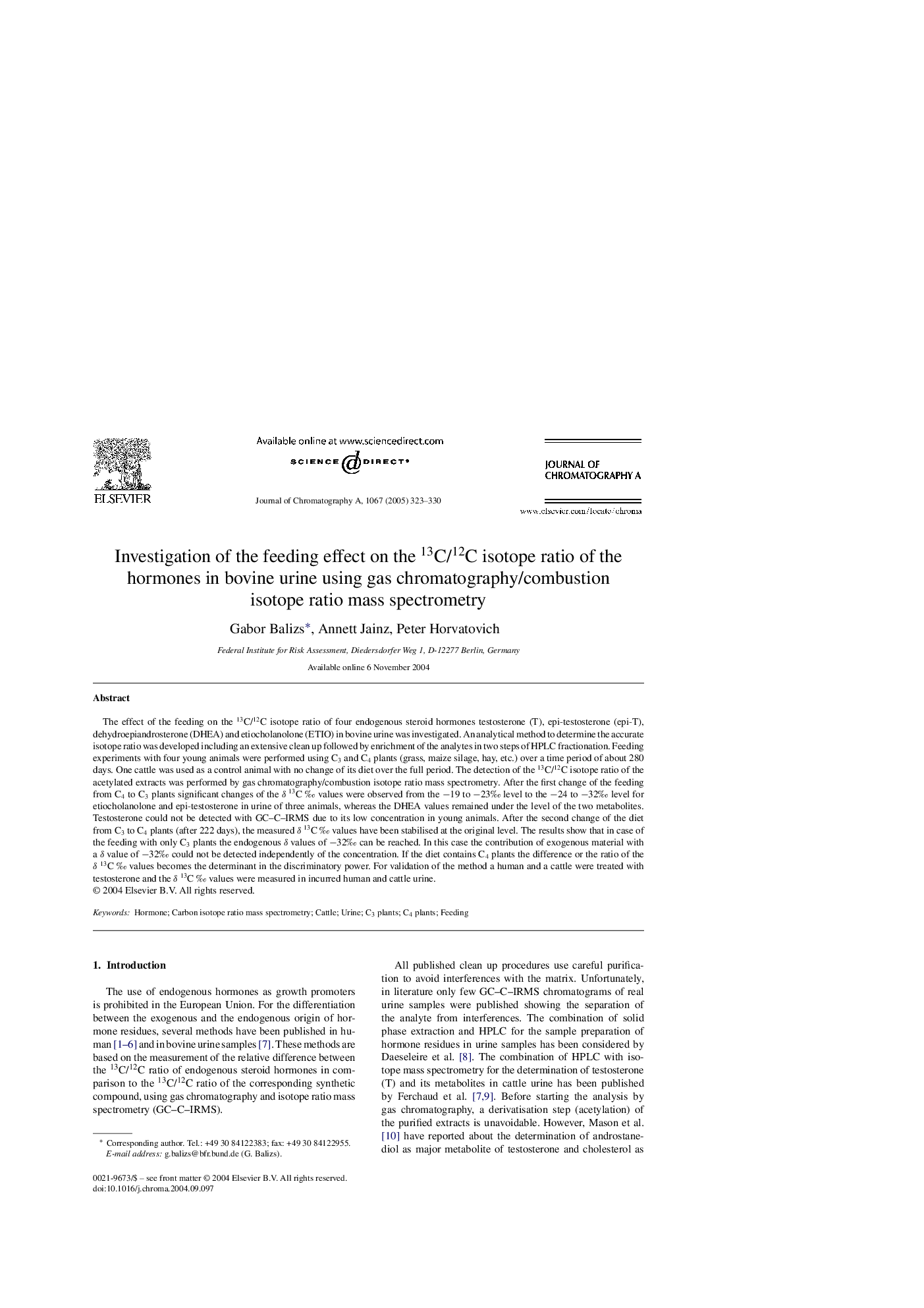| کد مقاله | کد نشریه | سال انتشار | مقاله انگلیسی | نسخه تمام متن |
|---|---|---|---|---|
| 9749275 | 1493805 | 2005 | 8 صفحه PDF | دانلود رایگان |
عنوان انگلیسی مقاله ISI
Investigation of the feeding effect on the 13C/12C isotope ratio of the hormones in bovine urine using gas chromatography/combustion isotope ratio mass spectrometry
دانلود مقاله + سفارش ترجمه
دانلود مقاله ISI انگلیسی
رایگان برای ایرانیان
کلمات کلیدی
موضوعات مرتبط
مهندسی و علوم پایه
شیمی
شیمی آنالیزی یا شیمی تجزیه
پیش نمایش صفحه اول مقاله

چکیده انگلیسی
The effect of the feeding on the 13C/12C isotope ratio of four endogenous steroid hormones testosterone (T), epi-testosterone (epi-T), dehydroepiandrosterone (DHEA) and etiocholanolone (ETIO) in bovine urine was investigated. An analytical method to determine the accurate isotope ratio was developed including an extensive clean up followed by enrichment of the analytes in two steps of HPLC fractionation. Feeding experiments with four young animals were performed using C3 and C4 plants (grass, maize silage, hay, etc.) over a time period of about 280 days. One cattle was used as a control animal with no change of its diet over the full period. The detection of the 13C/12C isotope ratio of the acetylated extracts was performed by gas chromatography/combustion isotope ratio mass spectrometry. After the first change of the feeding from C4 to C3 plants significant changes of the δ13C â° values were observed from the â19 to â23â° level to the â24 to â32â° level for etiocholanolone and epi-testosterone in urine of three animals, whereas the DHEA values remained under the level of the two metabolites. Testosterone could not be detected with GC-C-IRMS due to its low concentration in young animals. After the second change of the diet from C3 to C4 plants (after 222 days), the measured δ13C â° values have been stabilised at the original level. The results show that in case of the feeding with only C3 plants the endogenous δ values of â32â° can be reached. In this case the contribution of exogenous material with a δ value of â32â° could not be detected independently of the concentration. If the diet contains C4 plants the difference or the ratio of the δ13C â° values becomes the determinant in the discriminatory power. For validation of the method a human and a cattle were treated with testosterone and the δ13C â° values were measured in incurred human and cattle urine.
ناشر
Database: Elsevier - ScienceDirect (ساینس دایرکت)
Journal: Journal of Chromatography A - Volume 1067, Issues 1â2, 4 March 2005, Pages 323-330
Journal: Journal of Chromatography A - Volume 1067, Issues 1â2, 4 March 2005, Pages 323-330
نویسندگان
Gabor Balizs, Annett Jainz, Peter Horvatovich,